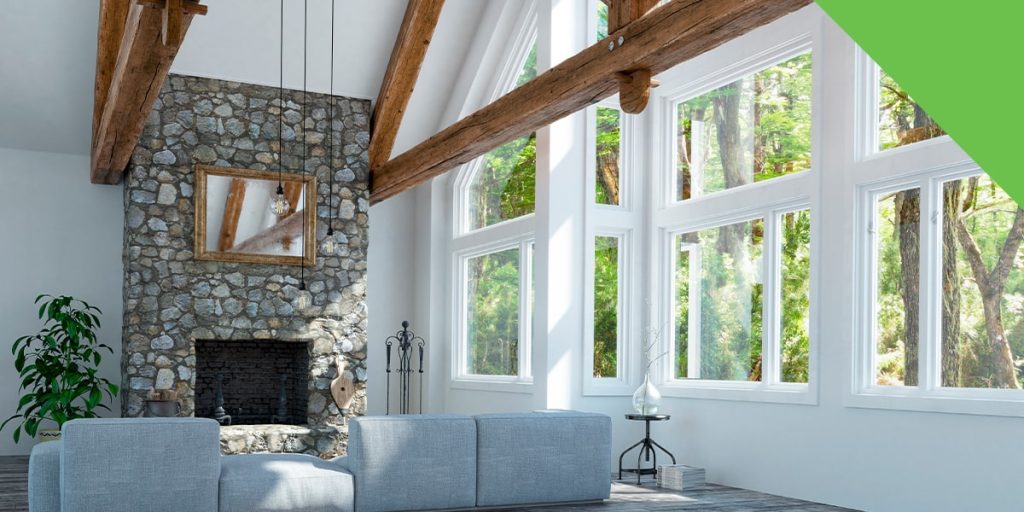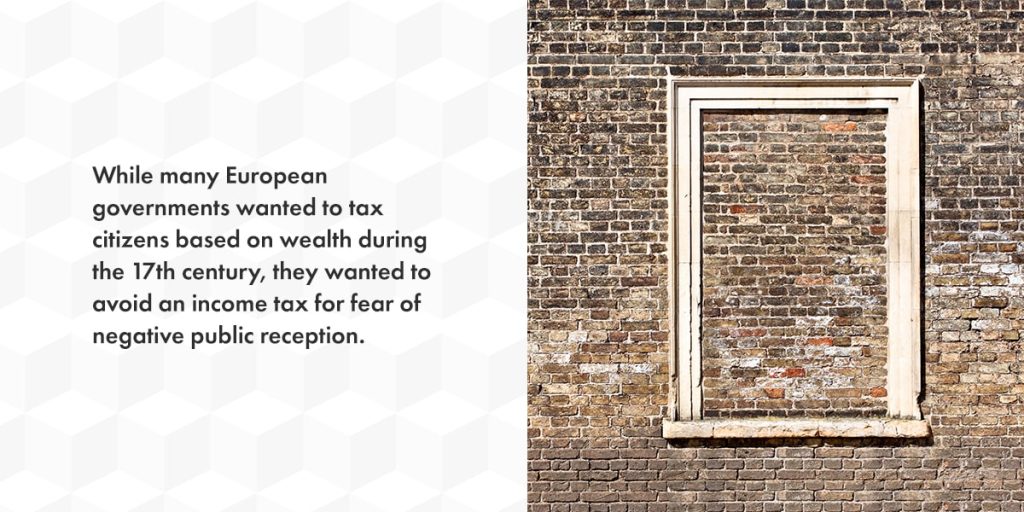MENU


Who invented house windows? Many of us have never taken the time to consider this question. After all, windows are so common today that it’s easy to assume they’ve been around forever. But the history of windows is just as fascinating as the rest of human history.
Our window glass history timeline begins in the prehistoric era, when humans first created lasting shelters.
Technically, windows have been around since people began building homes. Historians disagree on when home building began, but two commonly named “first” settlements include Terra Amata in France and Çatalhöyük in Turkey.
But in those days, their windows were little more than holes in the wall. To protect themselves from the elements — and flying weapons like arrows — many people covered these openings with makeshift curtains, such as:
As technology evolved, people created more effective coverings for windows. For example, the ancient Greeks were the first to use wooden plantation-style shutters to cover their windows.
The Romans were among the first to use glass in architecture, though their glass windows were very different from the ones we have today. Around A.D. 100, artisans in Roman Egypt experimented by adding manganese oxide to their glass mixture. While this addition produced transparent glass, it wasn’t perfectly clear.
Although the medieval Scandinavians weren’t the first to come up with glass windows, they were the ones to name them. The origin of the word “window” is thought to be the Old Norse word “vindauga,” which translates to “wind eye.”
Once the Romans had mastered the art of producing clear glass, Western Europeans began incorporating it into their architecture in increasingly creative ways.
For centuries, glass windows were too expensive to install in homes. Unless you were from an aristocratic family, you likely covered your windows with furs or other materials.
The only place most people encountered glass windows was in churches. Because the majority of the population was illiterate at the time, artisans would create dramatic stained glass panels depicting stories and symbols from religious texts. These windows would serve as learning tools and inspiration, encouraging the faithful to pursue holy and prayerful lives.
Just take a look at the beautiful stained glass windows in Europe’s Gothic cathedrals. The rose windows in Notre Dame and Chartres Cathedral are widely considered to be some of the most stunning examples of stained glass in the world.

While many European governments wanted to tax citizens based on wealth during the 17th century, they wanted to avoid an income tax for fear of negative public reception. Since only the rich could afford certain goods — like windows — their solution was to tax people based on their property.
Interestingly, taxes on windows only seemed to increase their value as commodities. Those who could afford to pay the taxes added more and more windows to show off their wealth. These enormous glass displays, while incredibly costly, were visually stunning examples of the day’s best architecture.
One of the most prominent examples was the English Window Tax of 1696, which taxed citizens based on the number of windows they had. To avoid paying hefty taxes, landlords would board up or even forego windows for buildings housing poorer citizens. The tax remained in effect until 1851, when legislators repealed it in the interest of improving public health.
During the Industrial Revolution of the 19th century, glassmakers began using the cylinder method, which enabled them to create flat sheets of glass instead of blowing and reheating crown glass windows.
Now that glass manufacturing was much more efficient, glass windows became more affordable for the common person. Gothic design underwent a renewal during the Victorian era, and new houses featured more windows than ever before.
As a result of the Gothic revival and art nouveau movements, stained glass windows became a common fixture in Victorian homes and businesses. Some Victorian-era houses still have their original 19th-century windows.
While the Romans were the first to install windows in homes, Swiss-French architect Charles-Édouard Jeanneret — more commonly known as Le Corbusier — was highly influential in adding them to modern housing designs. Dedicated to improving citizens’ quality of life, Le Corbusier emphasized natural ventilation and circulation.
Until this point, windows were typically single-paned, which allowed the cold to pass through easily. Double-glazed windows were essential to achieving Le Corbusier’s goal due to their ability to keep homes warm and comfortable.
A double-glazed window consists of two panes of glass with a layer of gas or air between them. The gas layer serves as insulation, helping to keep homes warm in the winter and cool in the summer.
This new technology changed everything for architects in the 20th century. The added insulation enabled them to experiment more with home design, which had been limited to small rooms and minimal natural lighting. Open floor plans and big windows became common as living conditions significantly improved in the post-war era.
Nowadays, we often take windows for granted. With today’s daring skyscraper designs featuring enormous walls of windows in almost every building, it’s easy to forget they were once a luxury.
Manufacturers today use more than simple glass in their residential windows. Wood, fiberglass, vinyl and aluminum-clad frames add stability and insulation to the glass panes.
Energy efficiency is an increasingly important consideration when designing homes today, and that includes window manufacturing and placement. Many modern architects use the passive house planning package (PHPP) model to determine the best window placement for insulation.
Manufacturing methods have changed as well. While double-glazed windows are still the most common type used today, triple-glazed windows have become the gold standard in energy efficiency. As time goes on, we’re likely to see more innovations in energy-efficient windows.

Windows have come a long way from the simple glass coverings of the Romans. Now, windows are designed to be as energy-efficient as they are beautiful, and we’re constantly finding new ways to make them more valuable.
Our expert design team can help you find the best, most energy-efficient windows for your home so you can get the best value. We’ll be with you every step of the way, from window selection to installation and service.
If you’re considering replacing your home’s windows, we’re here to help. Give us a call at (513) 283-8996 to set up an in-home consultation.